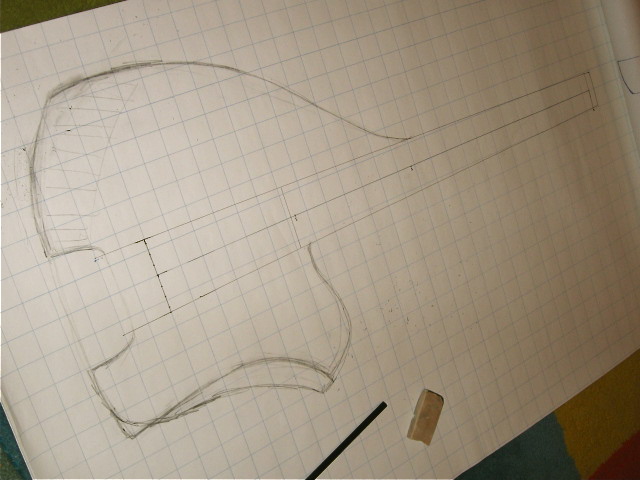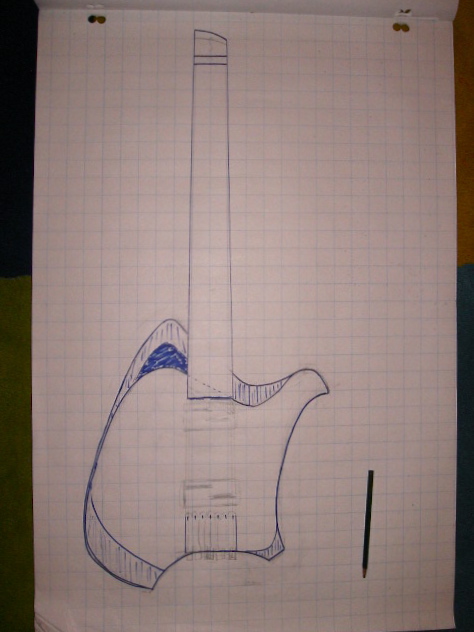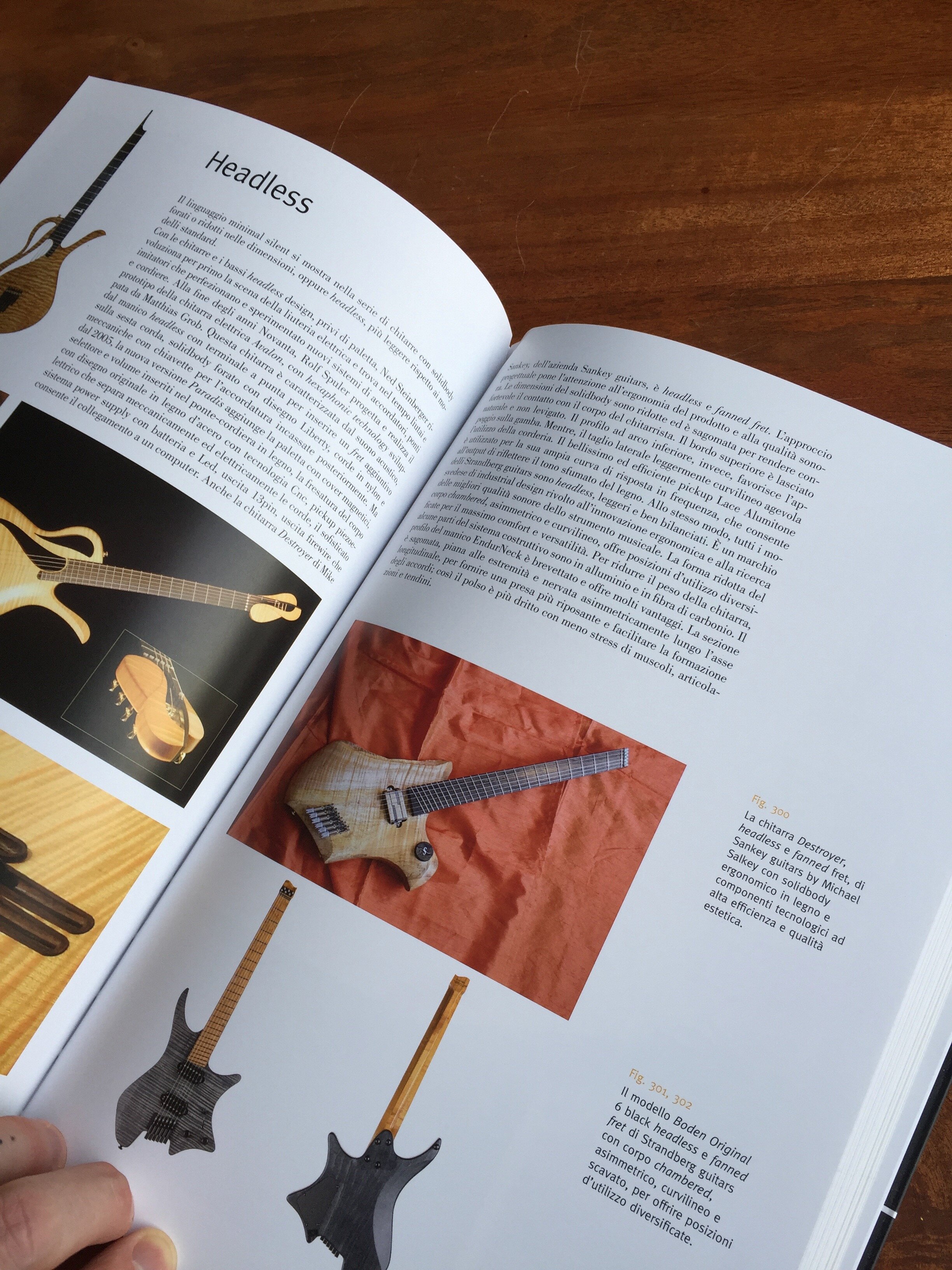I've just got a really interesting new commission to build another ultramodern headless seven-string guitar. Lots of fun, but it's always challenging to come up with yet another original design. If you've ever wondered where it starts, here you go.
After discussing with the client what their needs and desires are, I lay out the essentials. These are the parts that have clealy defined parameters- mostly this means the fretboard width and length, the bridge position, and the edges that are needed to hold the guitar comfortably, like this:

I find it much the best to draw full size. Once the basics are in place, the creative part begins. Drawing with soft pencil and eraser, I home in on a shape that might work:

More erasing, more refinement. This particular guitar will be semi-hollow, too. I imagine the way it will look with a contrasting top layer, and sketch in where the wood will be carved away for comfort, exposing the boy wood underneath. Here's what I came up with:

You can see the two layers, as well as the area in the upper left of the body where the hollow in the body is exposed, creating a soundhole. I thought that was pretty clever.
By this point I've got a pretty good 3D rendering of the instrument in my own head. To help the client visualize though, I do a few drawings of some of the details:

Turns out that four years of Fine Arts in University weren't a complete wast of time, though to be fair to myself they didn't teach this kind of stuff. Next step, converting these flat drawings into a real guitar! Stay tuned...














